Ever had that sinking feeling when a best-selling product goes out of stock, and you realize the reorder never went through?
You’re not alone.
As your business grows, managing purchase orders with sticky notes and spreadsheets just doesn’t cut it anymore.
You need something smarter.
Whether you're running a Shopify store, managing multiple warehouses, or handling custom orders, a good PO management app can take the chaos out of reordering and give you complete visibility into what’s coming, when, and from whom.
Let’s explore 10 of the best tools built to do exactly that.
Why Purchase Order Management Matters
In any inventory-driven business, managing purchase orders isn't just about paperwork, it's about survival. If you don't know what’s on order, when it's arriving, or how much it costs, you're operating in the dark. That’s risky territory when customers expect fast delivery and out-of-stock items can cost you sales.
A good purchase order (PO) management system ensures that:
- You never miss a reorder. It tells you exactly when to restock and how much to order.
- You stay organized with suppliers. Every order, delivery, and invoice is tracked, no more digging through emails.
- You control costs. With visibility into product pricing, shipping charges, and landed costs, you're always aware of your margins.
- You avoid overstocking and understocking. Smart PO systems sync with real-time inventory data to prevent costly mistakes.
Key Features to Look for in a Purchase Order Management System
Not all purchase order systems are created equal. The right one can save you time, reduce stockouts, and make your inventory operations far more predictable. But how do you know what features actually matter?
Here’s what to look for in a solid PO management tool especially if you're managing physical products across multiple channels or suppliers:
Automated Purchase Order Creation
The best systems let you auto-generate POs based on stock levels, sales velocity, or reorder points. This eliminates guesswork and helps you reorder the right products at the right time before you run out.
Partial and Full Receipts
Suppliers often send items in batches. Your system should allow partial receipts so you can track exactly what has arrived and what’s still pending, without throwing off inventory accuracy.
Real-Time Inventory Sync
When you receive stock against a PO, your inventory should update instantly across all connected sales channels. This is critical for avoiding overselling and keeping customers happy.
Supplier and Cost Tracking
Good PO systems store supplier info, pricing, lead times, and more, so you always have vendor data at your fingertips. Bonus if it helps calculate landed costs to protect your profit margins.
Seamless Integrations
Make sure your PO system integrates smoothly with platforms you already use like Shopify, Amazon, QuickBooks, Xero, or your warehouse management tool. This reduces manual work and errors.
We’ve rounded up 10 of the best apps to keep your purchase orders in check.
1. Sumtracker
Sumtracker is built for Shopify and multichannel eCommerce brands who are looking for a software that makes purchase order management easy, fast, and accurate, without the clutter of an ERP. With a clean interface and mobile-first design, it’s ideal for small to mid-sized teams who want reliable inventory sync and smarter restocking.
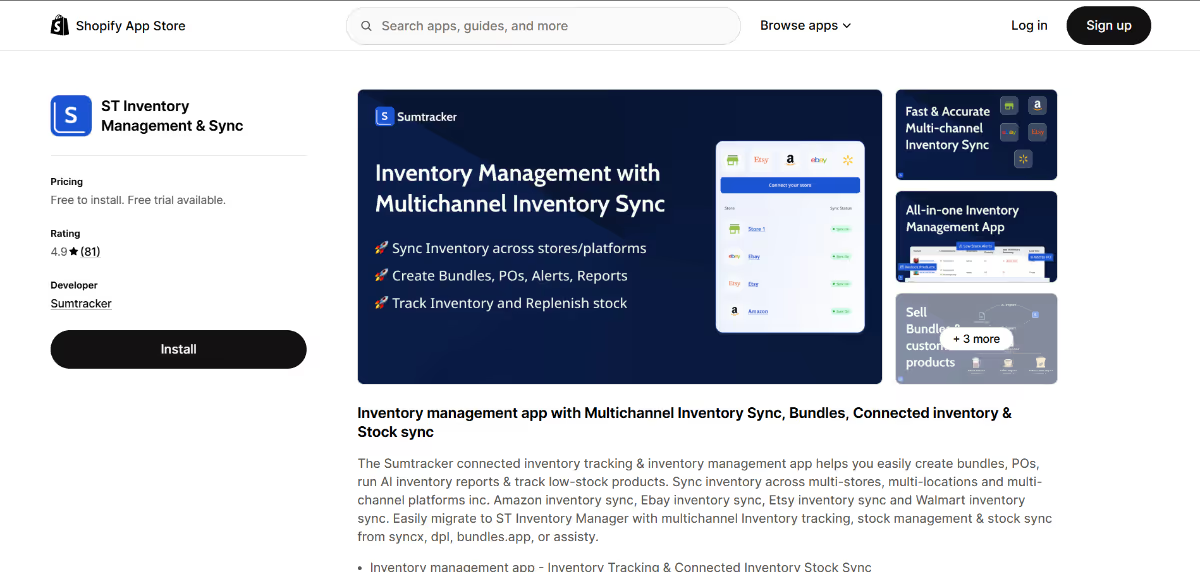
Key Features:
- Create purchase orders in seconds with auto-filled supplier and product info
- Receive partial or full inventory directly against POs
- Smart restock recommendations based on sales velocity and stock cover
- Real-time inventory sync across Shopify, Amazon, Etsy, eBay, and more
- Fully mobile-optimized and works flawlessly on your phone’s browser
Pros:
- Incredibly easy to use, even for non-technical users
- Blazing fast sync across channels keeps your stock accurate 24/7
- Mobile browser experience is smooth and reliable.
- Transparent pricing and friendly onboarding support
Cons:
- No built-in shipping or fulfillment module
- Not suited for advanced manufacturing workflows
Pricing: Starts at $49/month
2. Katana Cloud Inventory
Katana is a favorite among DTC manufacturers and makers. It connects purchase orders directly with your production planning, giving you real-time visibility into raw materials, finished goods, and vendor lead times, all in one place.
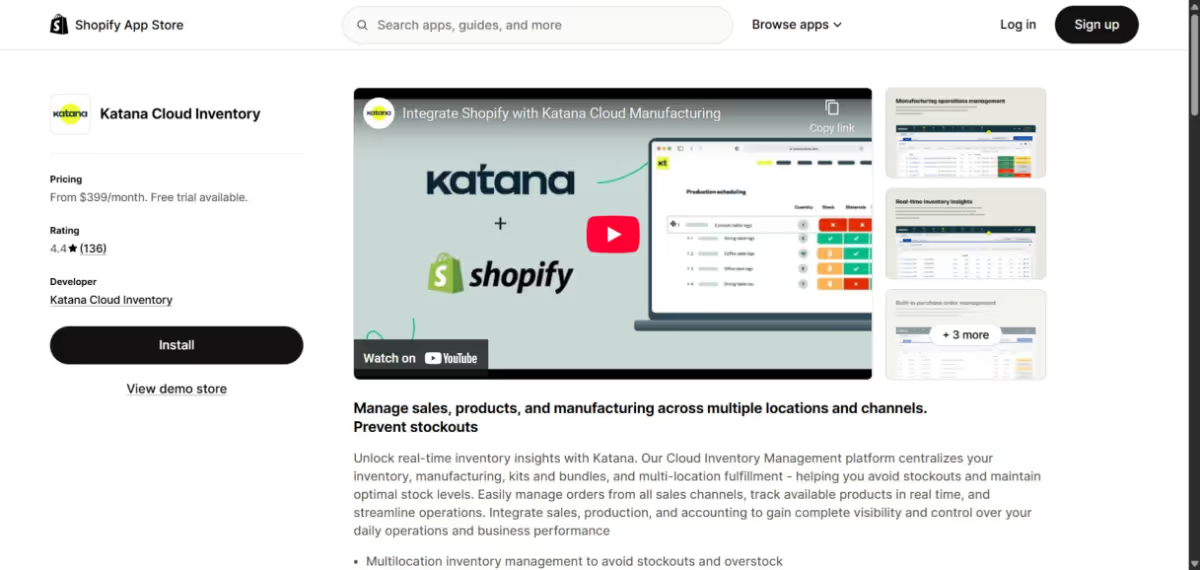
Key Features:
- PO generation based on production needs
- Raw material and component-level tracking
- Supplier lead time and availability management
- Real-time inventory across multiple locations
Pros:
- Visually appealing interface
- Tailored for manufacturing workflows
- Good Shopify and eCommerce integrations
Cons:
- Not ideal for complex wholesale or B2B setups
- Pricing scales up quickly with team size
Pricing: From $349/month
3. Zoho Inventory
Zoho Inventory is a budget-friendly inventory and PO tool that’s great for SMBs, especially if you're already using Zoho Books or Zoho CRM. It handles basic to intermediate purchasing tasks with vendor tracking and automated reordering.
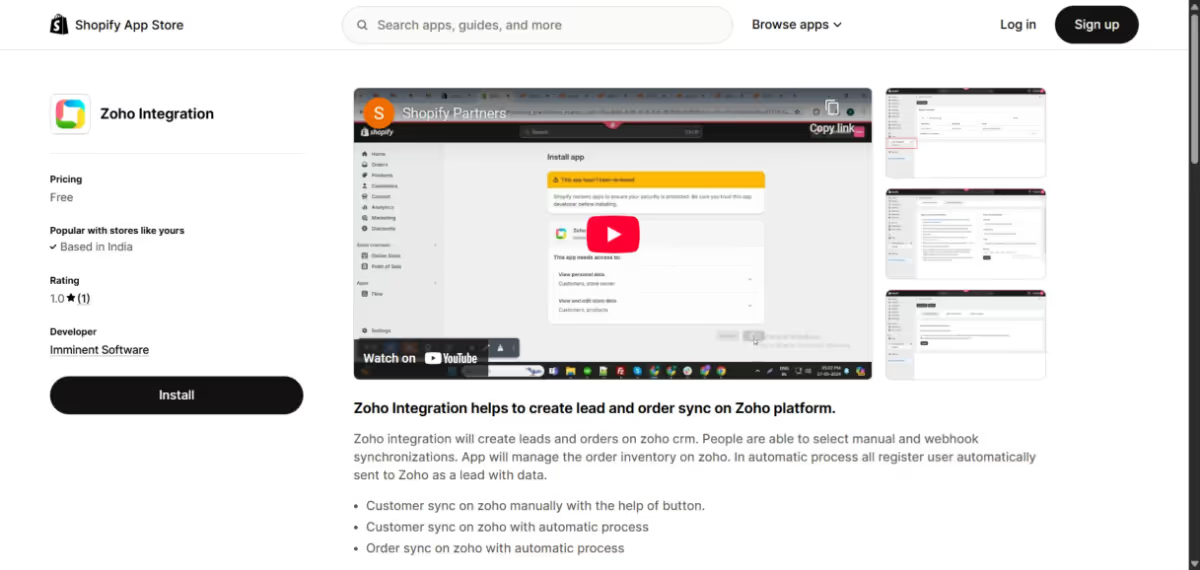
Key Features:
- Auto-generation of POs from low stock levels
- Supplier and price list management
- Supports backorders and dropshipping
- Syncs with Zoho ecosystem and Shopify
Pros:
- Very affordable for small businesses
- Seamless integration with other Zoho tools
- User-friendly interface
Cons:
- Best used inside the Zoho ecosystem
- Interface can feel cluttered for some users
Pricing: Free plan available; paid plans start at $29/month
4. Cin7 Core (formerly DEAR Systems)
Cin7 Core is a robust inventory and order management system built for high-volume sellers, wholesalers, and brands with complex procurement workflows. It excels in multi-supplier ordering, landed cost calculations, and accounting integration.
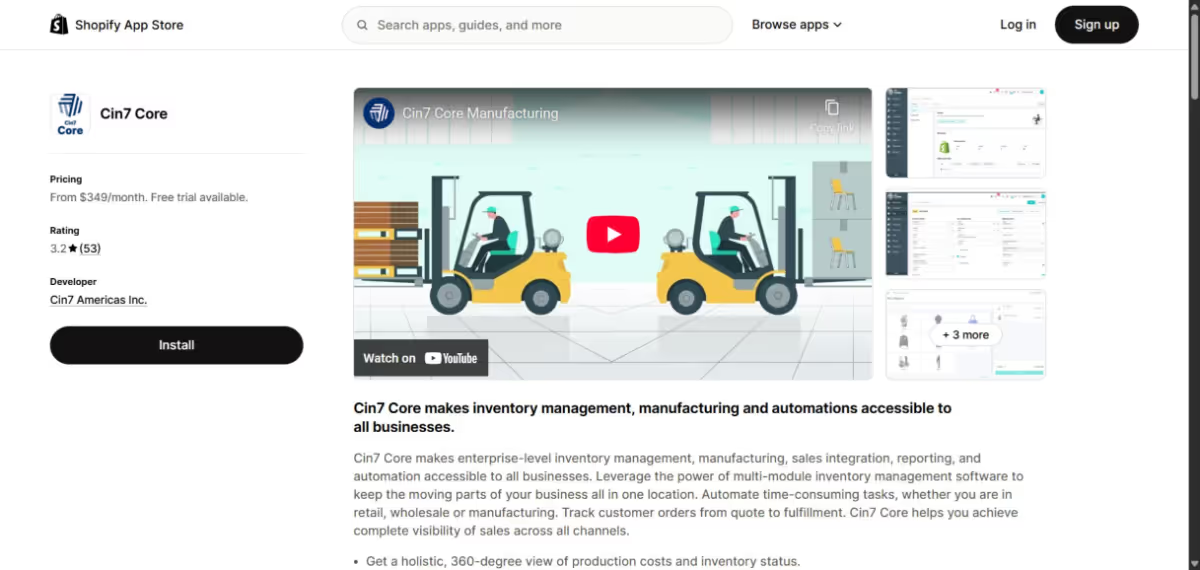
Key Features:
- Detailed PO workflows with approvals
- Landed cost and tax-inclusive pricing
- Dropshipping and backordering options
- Deep integrations with Xero, Shopify, Amazon
Pros:
- Incredibly powerful and customizable
- Great for wholesale and distribution
- Excellent reporting and analytics
Cons:
- Not beginner-friendly and steep learning curve
- Requires onboarding help and setup support
Pricing: Starts at $349/month
5. Inventory Planner by Sage
Inventory Planner is a smart demand forecasting and purchasing solution that helps eCommerce brands optimize their inventory. Rather than managing your inventory directly, it recommends what to reorder and when based on real sales data and future demand.

Key Features:
- Sales-based forecasting with seasonal adjustments
- Auto-generated PO suggestions
- Supplier insights and cash flow impact reports
- Works with Shopify, Amazon, BigCommerce, and more
Pros:
- Accurate, AI-driven forecasting
- Saves working capital and reduces overordering
- Simple to use with great integrations
Cons:
- Not a full inventory management solution
- May be overkill for very small teams
Pricing: Custom
6. Unleashed Software
Unleashed is ideal for manufacturers, wholesalers, and food brands that need detailed inventory control with batch tracking and costing. It’s built for teams who care about precision in procurement and supplier performance.
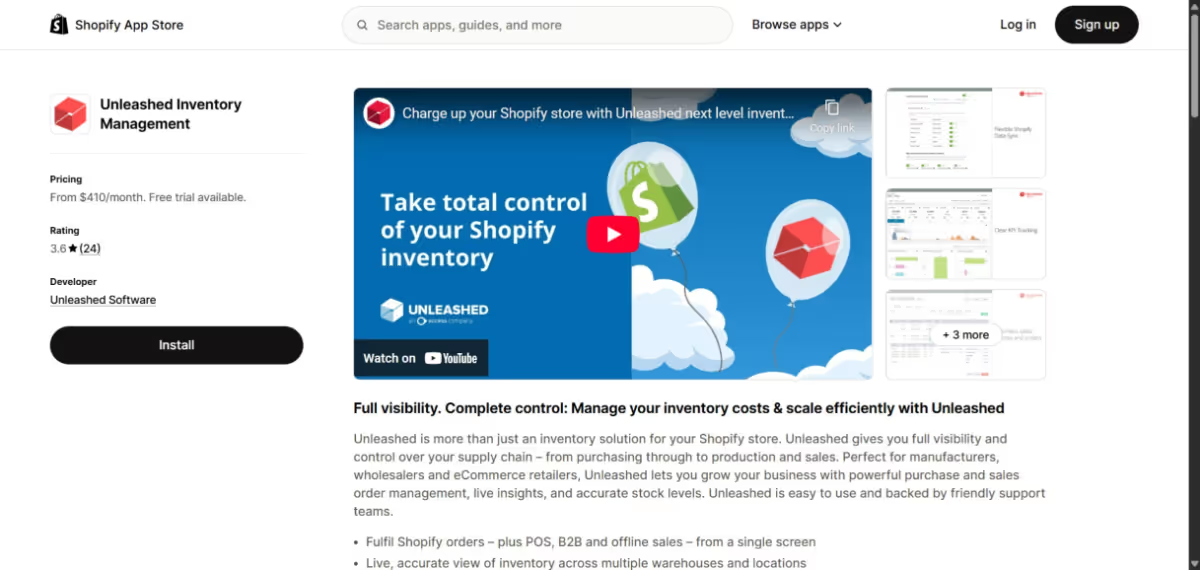
Key Features:
- Multi-supplier POs and partial receipting
- Real-time landed cost and margin tracking
- Batch and expiry date tracking
- Built-in reports for procurement trends
Pros:
- Powerful for industries with traceability needs
- Accurate costing tools
- Good support and documentation
Cons:
- Can feel overwhelming for new users
- UI isn’t the most modern
Pricing: Starts at $410/month
7. Ordoro
Ordoro is a great all-in-one solution for small brands that need inventory, purchasing, and shipping tools in a single platform. It helps streamline operations by linking POs to incoming shipments and even printing labels.
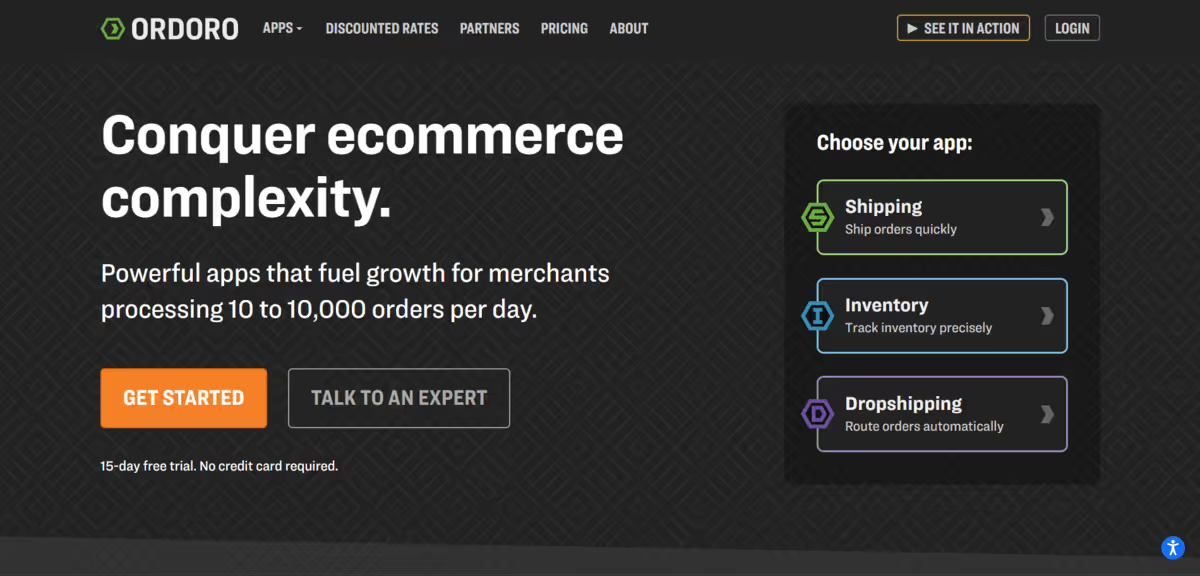
Key Features:
- Vendor management and PO generation
- Track receiving and backorders
- Integrated barcode scanning
- Built-in shipping label generation
Pros:
- Combines POs and shipping tasks
- Simple interface
- Affordable for small businesses
Cons:
- Lacks deep inventory analytics
- Not ideal for manufacturing or wholesale
Pricing: Starts at $59/month
8. NetSuite ERP
NetSuite is the gold standard ERP for larger organizations that need end-to-end visibility and control. Its PO module includes complex workflows, compliance features, and global vendor management, all customizable.
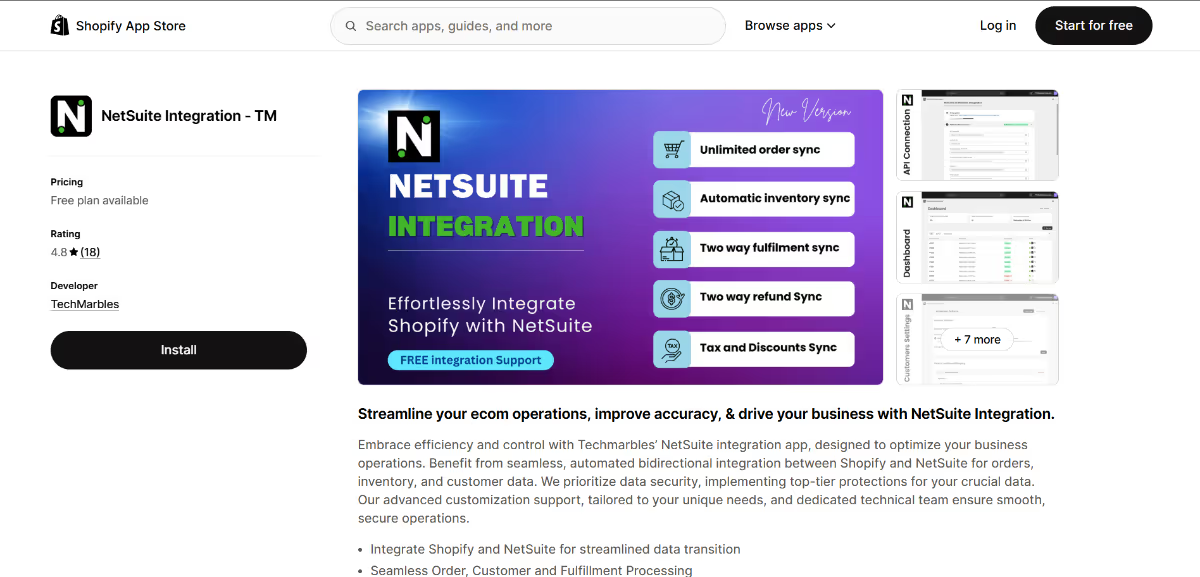
Key Features:
- Custom PO approval workflows
- 3-way match with receipts and invoices
- Multi-currency and international tax compliance
- Vendor scorecards and performance tracking
Pros:
- Extremely scalable
- Strong financial and compliance tools
- Trusted by enterprise-level teams
Cons:
- Very expensive and time-intensive to set up
- Overkill for SMBs
Pricing: Custom pricing (usually $1,000+/month)
9. SkuVault
SkuVault is designed for warehouse-heavy operations that rely on barcodes and precise stock control. Its PO features help automate reorder workflows and streamline receiving with real-time updates.
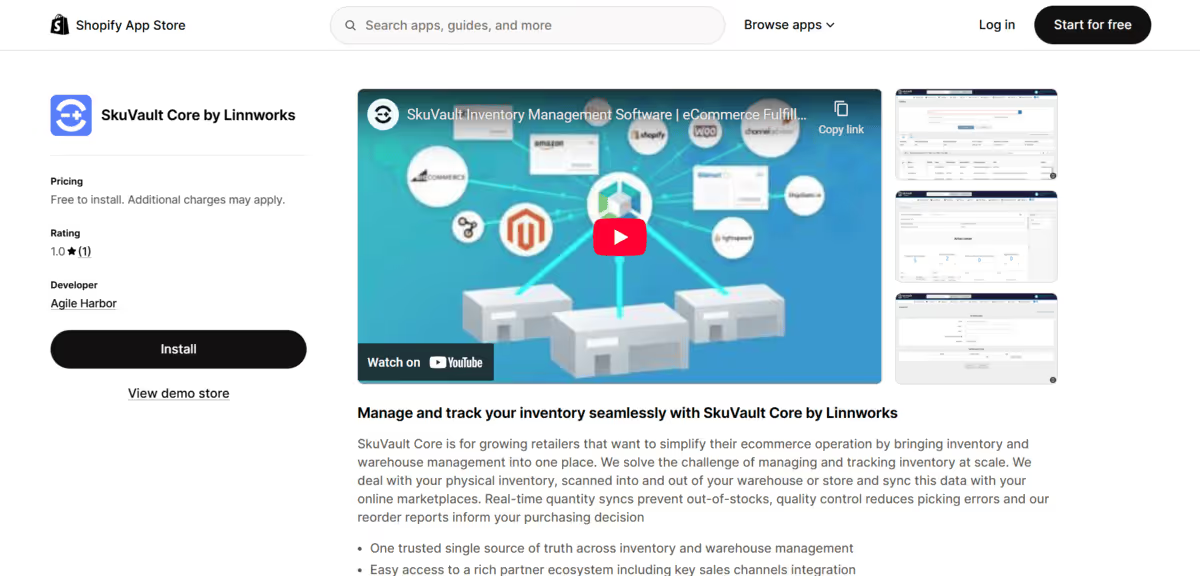
Key Features:
- Auto-generated POs based on reorder thresholds
- Barcode-powered receiving and PO matching
- Supplier delivery tracking
- Integrates with Shopify, Amazon, eBay, and more
Pros:
- Built for warehouse teams
- Great for reducing stock errors
- Good multichannel integrations
Cons:
- Interface can feel dated
- May be complex for small teams to adopt
Pricing: Custom
10. Odoo Inventory
Odoo is an open-source ERP that offers one of the most customizable inventory and PO systems on the market. It’s modular, so you only pay for the features you need and you can adapt workflows to your exact business needs.
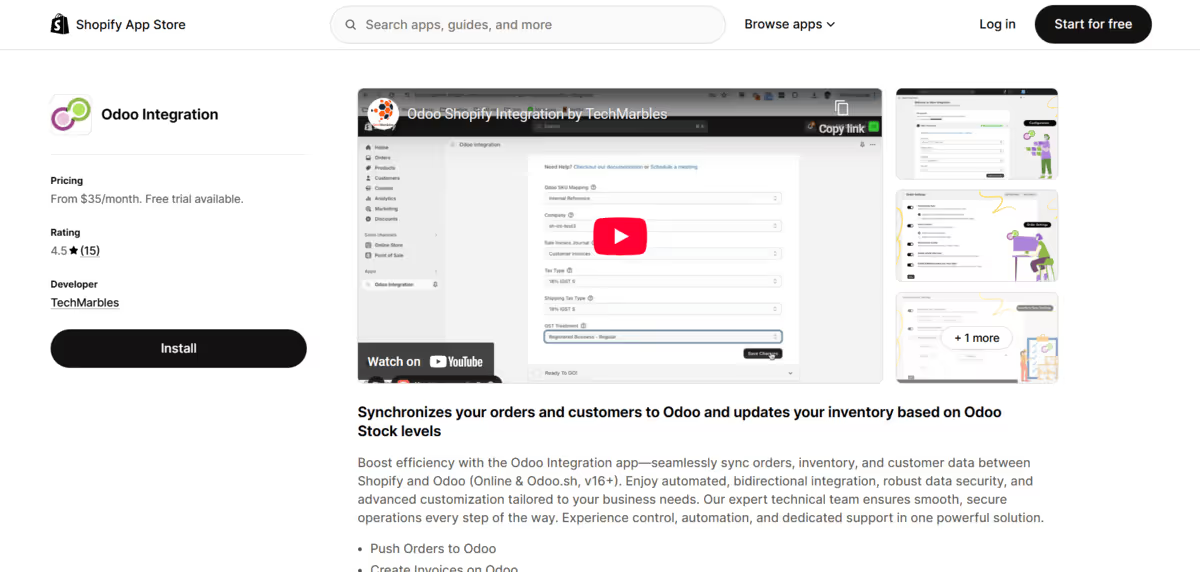
Key Features:
- Custom PO rules and vendor management
- Lead time and pricing list setup
- Vendor bills and accounting integration
- Fully open-source and developer friendly
Pros:
- Very affordable for what it offers
- Open-source flexibility
- Modular only pay for what you use
Cons:
- Requires technical setup
- UI may feel outdated or complex at times
Pricing: From $35/month
Benefits of Using a Purchase Order Management App
A purchase order management app streamlines your procurement workflow, saves time, and helps you avoid costly inventory mistakes.
Here are the key benefits:
1. Prevents Stockouts and Overordering
PO apps help you reorder at the right time, using real-time inventory levels and demand data. That means no more running out of best-sellers or wasting money on excess stock.
2. Improves Vendor Communication
Send accurate, professional POs to suppliers in a few clicks. You can track what was ordered, when, and at what price, reducing the risk of miscommunication or incorrect deliveries.
3. Speeds Up Receiving and Reconciliation
Easily match incoming deliveries to purchase orders. Whether it’s a full shipment or a partial one, PO apps keep records clean and inventory counts accurate.
4. Gives You Clear Cost and Margin Visibility
Many PO tools help calculate landed costs including shipping and duties, so you know your true margins and can price your products confidently.
5. Saves Time and Reduces Human Error
Manual ordering processes are prone to errors. A dedicated PO app automates repetitive tasks, reduces data entry, and frees up your team to focus on higher-value work.
Conclusion
In today’s fast-paced commerce world, staying on top of your purchasing game isn’t optional, it’s essential.
Whether you're a growing Shopify brand, a full-scale manufacturer, or a warehouse-heavy operation, the right purchase order management app can mean the difference between smooth scaling and daily inventory chaos.
From automation and real-time sync to smart forecasting and mobile accessibility, the best tools help you buy smarter, restock faster, and operate with confidence.
The key?
Choose the app that aligns with your current needs, but can also grow with you as your business evolves.
Still unsure?
Start with one that offers a free trial or a low entry plan. Once you experience the clarity and control a great PO system offers, you won’t look back.
FAQS
1. What is a purchase order management system?
A purchase order management system is a tool that helps businesses create, track, and manage purchase orders sent to suppliers. It ensures accurate reordering, improves vendor communication, and keeps inventory and cost data organized.
2. Who should use a purchase order management app?
Any product-based business including eCommerce brands, wholesalers, and manufacturers, can benefit from a PO management app. It’s especially useful for businesses dealing with multiple SKUs, suppliers, or warehouses.
3. Can a PO management app integrate with my existing inventory system?
Most modern PO apps offer integrations with platforms like Shopify, Amazon, Xero, QuickBooks, and inventory tools. Always check compatibility with your tech stack before choosing a solution.
4. What’s the difference between a purchase order and an invoice?
A purchase order is a document a buyer sends to a supplier to request goods. An invoice is what the supplier sends back, requesting payment after the goods are delivered. A PO app helps manage this workflow.
5. What’s the most important feature to look for in a PO management app?
The most important feature is automated reorder suggestions based on stock levels and sales trends. It helps prevent stockouts and ensures you’re always ordering the right products at the right time.
Conclusion
Ready to Simplify Your Inventory Management?
Join hundreds of e-commerce merchants who rely on Sumtracker to save time, eliminate errors, and grow their business.
.svg)



.avif)
.avif)
.png)